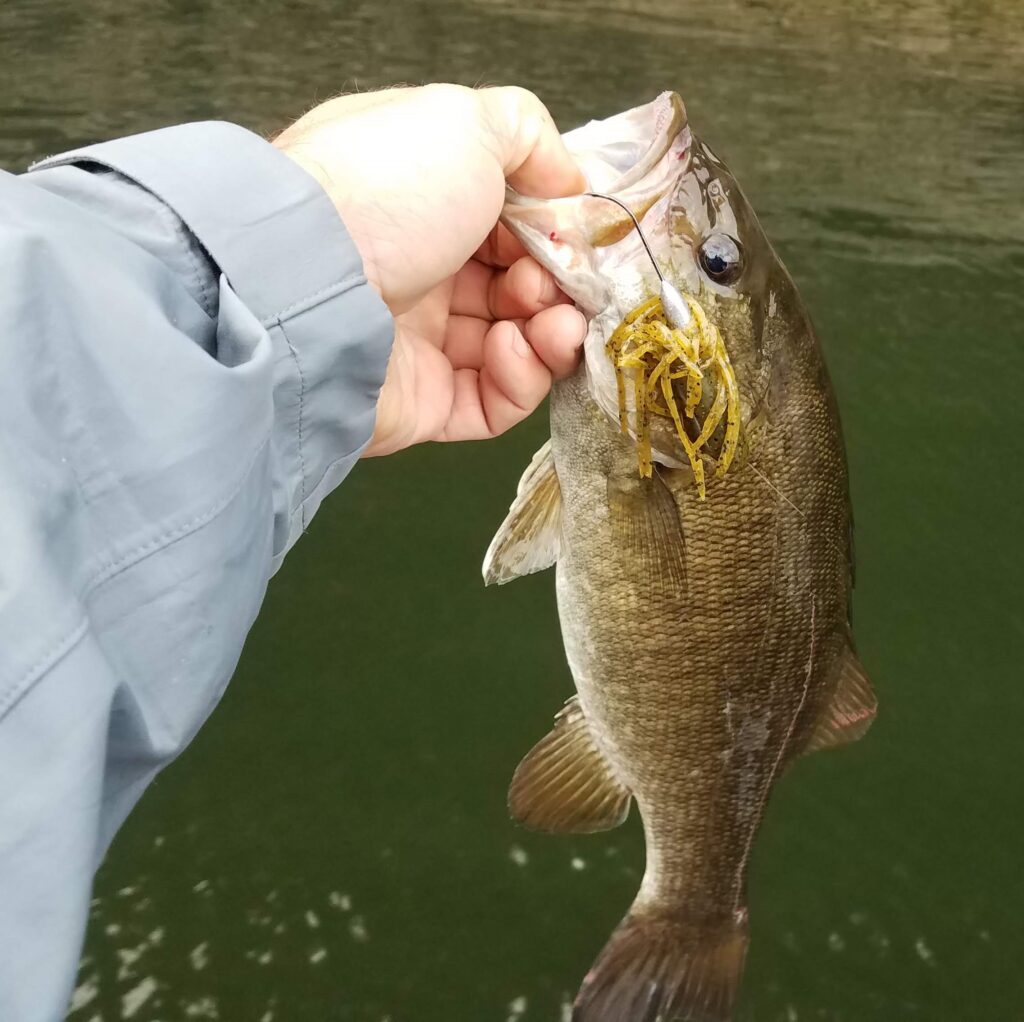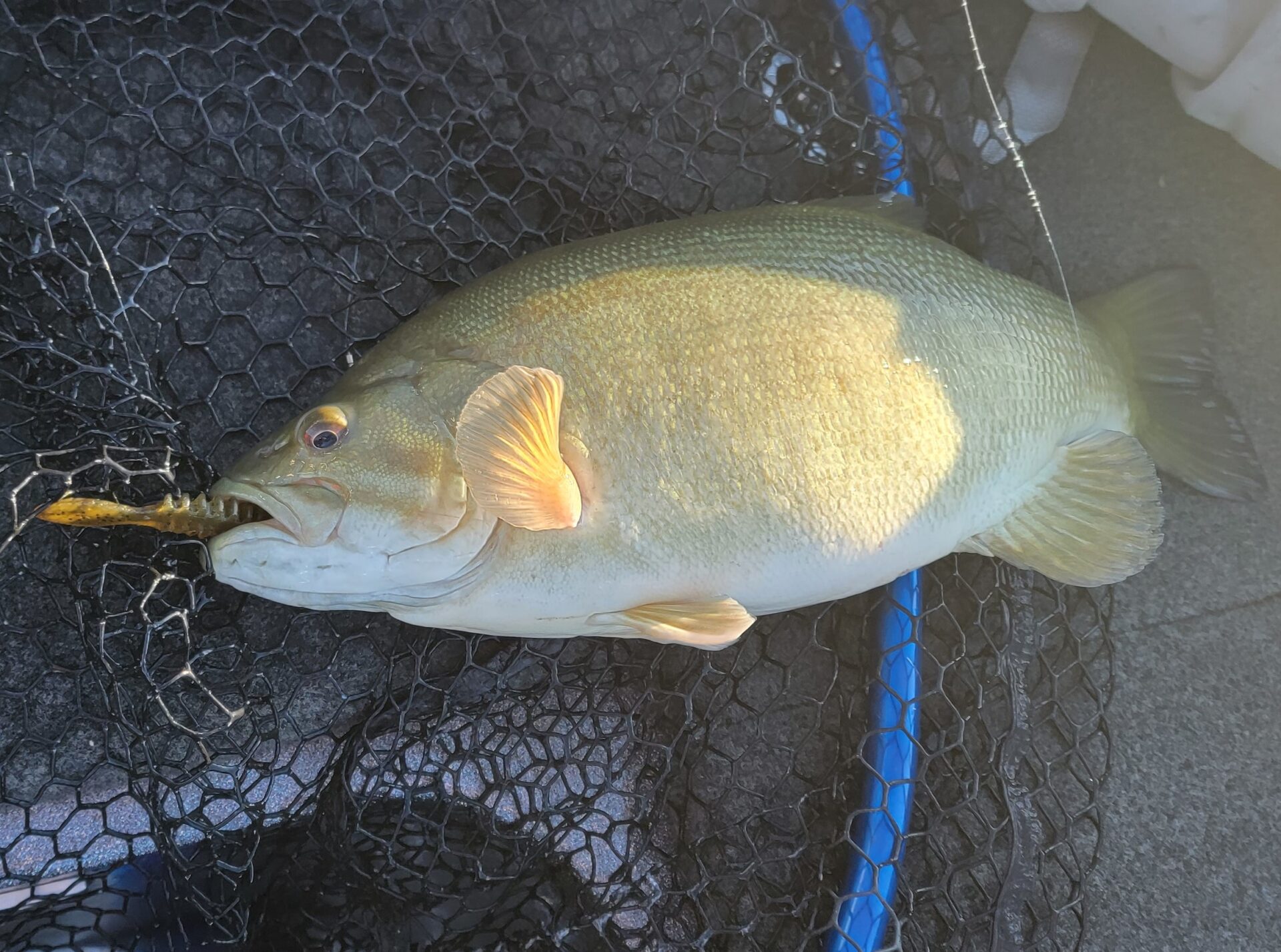If you like bass fishing, Lake Erie is a place you need to visit. The quantity and quality of bass in Lake Erie is astounding. This article will give you the tools you need to try Lake Erie Bass Fishing.
Why is Lake Erie Bass Fishing so Popular?
1. Smallmouth and Largemouth Bass Populations on Lake Erie
Bass populations in Lake Erie have gone up and down over the years. Mostly due to angler pressure. In certain years the smallmouth population was decimated around the islands. Now there are rules in place to protect spawning fish in the spring. This ensures a healthy fishery for all generations.
2. Where to Find Lake Erie Bass
Bass exist all over Lake Erie. Some areas are more dense than others. For example, largemouth love harbors and boat docks. Smallmouth love rocky shorelines and points. Lake Erie has rocky features underwater, not to mention the shipwrecks that hold trophy smallmouth bass. The shorelines on all sides are covered in underwater rocks and lake weeds. Smallmouth will congregate in these areas in search of spawning grounds, bait, and shelter. The reef complex and North Bass Island are great places to fish.
Rocky areas can be found around Kelley’s Island, South Bass Island, and Middle Bass Island. To catch smallmouth bass, look for rocky areas with deep water close by. Lake Erie smallmouth can be caught as deep as 40′ in some cases. For largemouth, fish the main shoreline and look for weed beds. Largemouth will school up to feed on these weed beds in all months of the year.
The best times for Lake Erie Bass Fishing
3. Lake Erie Smallmouth Bass: Spring Fishing
Springtime is best for numbers fishing for smallmouth bass on Lake Erie. As temperatures rise, smallmouth bass become more active, moving to shallower waters. Smallmouth can be fished for right after the ice leaves, but the peak time to fish is when the water gets to the upper 40’s and lower 50’s. These fish are active at those temperatures. Anglers key in on this behavior, employing a variety of techniques such as jerkbaits, crankbaits, and soft plastics to entice bites from these feisty fighters.
Finding smallmouth in the Spring isn’t too difficult. Smallmouth on Lake Erie like the same areas when it’s time to spawn. Fish will cruise rocky flats in search of a place to spawn. Male fish will cruise the flats first, followed by the females when the water temperature gets above 55 degrees. Targeting these flats with moving baits and tubes can be a great tactic. Focus on flats in the 10-12 ft. range with structure. Use structure scan to identify these areas. Water temperature plays a big role in when the fish will move up, the further East you go, the later the spawn.
4. Lake Erie Largemouth: Summer Fishing
It is summertime and largemouth bass are grouped up in the weed beds on the Lake Erie shores. The warmer water temperatures encourage largemouths to explore the shallows, providing exciting opportunities for topwater action. Buzzbaits, frogs, and other surface lures become go-to choices for enticing strikes from these elusive and powerful fish. Sometimes largemouth will group up in 10-15 fow outside marinas to feed, these are excellent places to try a tube or dropshot bait. The marinas around Catawba Island are a great place to fish for Lake Erie Largemouth. The main lake has some shallow grassy areas that hold largemouth bass as well.
5. Smallmouth Fishing Lake Erie: Summer Months
In the summertime, smallmouth can be found grouped up in deep water 20-35 FOW. Smallmouth like irregularities in the bottom, such as a hump or boulders. You can find this using structure scan on a fish finder. Most fishermen that target smallmouth will scan the bottom at speed and look for these irregularities.
Smallmouth will also hang around steep drop-offs such as an underwater point. The islands in the western basin of Lake Erie are a great place to look for this structure. Pelee Island has this structure on all sides and has a great population of smallmouth bass. If you are having trouble finding smallmouth or want to lessen the learning curve, consider hiring a smallmouth bass guide.

6. Fall Fishing
Fall is a season of transition on Lake Erie, and it’s during this time that anglers often pursue trophy bass. The cooling water temperatures trigger migrations, prompting both smallmouth and largemouth bass to feed heavily. Crankbaits, jigs, and spinnerbaits are popular choices for fall Lake Erie Largemouth. For smallmouth, a drop shot or swimbait is hard to beat in the fall. In recent years the Canadian smallmouth Lake Erie record was broken fishing around Pelee Island in the fall. In the fall smallmouth can be found deep and shallow around the structure.
Lake Erie Bass Fishing Tips and Techniques
7. Look for Baitfish
Finding bait around structure is a key factor in finding smallmouth bass on Lake Erie. Look for groups of shad using electronics. On a fish finder, a bait school looks like a large blob. This is typically emerald shiners or shad in a tight group. Start deep and work in shallow targeting areas that have bait. One other primary food for smallmouth is gobies. These can be found in rocky areas but are impossible to pick out on a fish finder. A good indicator they are in the area is if you are getting small pecks while fishing. Those bites are normally gobies. Largemouth will also hang around bait in all months of the year. Look for schools of baitfish in about 10-12 fow around the shorelines of the lake. These are great places to find largemouth bass.
8. Bass Behavior
Successful bass fishing on Lake Erie requires a keen understanding of bass behavior in different seasons. Being aware of their movement patterns, preferred habitats, and feeding habits enhances an angler’s ability to locate and catch bass consistently. Largemouth slow-moving shallow water around grass which creates oxygen. Smallmouth prefer deep underwater structure, even when spawning. Lake Erie smallmouth live around drop-offs. They will hover in these areas pre and post-spawn. Just like any lake, there are feeding times. In the spring, bass can typically bite all day depending on conditions. In the summer and fall, bass fishing might be better in the morning and evenings. Schools of bass will move and feed during low-light periods.
9. Using Electronics to Catch Bass
Given the size of Lake Erie, the use of modern electronics is crucial. High-quality fish finders and GPS units can help anglers locate underwater structures, identify drop-offs, and pinpoint the most promising fishing spots. This technological edge significantly improves the chances of a successful day on the water. Side scanning for underwater structures is key to finding smallmouth bass on Lake Erie.
Forward-facing sonar has taken over bass fishing in the past few years. Lake Erie bass fishing is no exception to that. Forward-facing sonar now plays a big role in fishing for them.
Hopefully, these tips will help you catch more bass on Lake Erie. Remember, a key tip is to find where the bait is. Also, if it is springtime, look for beds and shallow-roaming fish.

